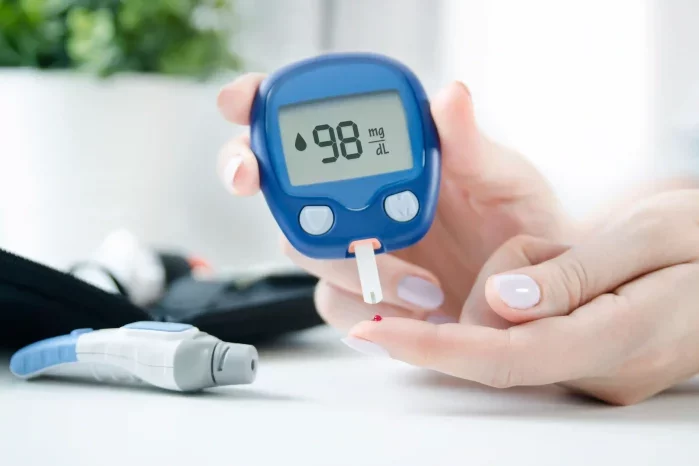Insulin resistance is a condition in which the body’s cells become less responsive to the hormone insulin, leading to elevated blood glucose levels. It is a precursor to type 2 diabetes and is associated with various metabolic disorders, including obesity, hypertension, and dyslipidemia. Detecting insulin resistance early is crucial for preventing the progression to type 2 diabetes and managing related health issues. In this comprehensive article, we will explore the various tests used to diagnose insulin resistance, their procedures, advantages, and limitations.
Understanding Insulin Resistance
Before delving into the tests for insulin resistance, it is essential to understand what insulin resistance is and its significance. Insulin is a hormone produced by the pancreas that facilitates the uptake of glucose from the bloodstream into cells for energy production. In individuals with insulin resistance, cells in the muscles, fat, and liver become less sensitive to insulin, requiring higher levels of insulin to achieve the same effect. Over time, this can lead to increased insulin production, hyperinsulinemia, and eventually type 2 diabetes when the pancreas can no longer keep up with the demand.
Signs and Symptoms of Insulin Resistance
While insulin resistance can be asymptomatic in its early stages, certain signs and symptoms may indicate its presence, including:
- Acanthosis nigricans: Dark, velvety patches of skin, typically found in body folds and creases.
- Increased waist circumference: Central obesity is a common feature.
- High blood pressure: Often associated with metabolic syndrome.
- Elevated fasting blood glucose levels: Indicative of impaired glucose metabolism.
- Elevated triglyceride levels and low HDL cholesterol levels: Common in individuals with insulin resistance.
Tests for Diagnosing Insulin Resistance
There are several tests and methods used to diagnose insulin resistance. These tests vary in complexity, accuracy, and practicality. The most commonly used tests include:
Fasting Insulin and Glucose Levels
Fasting Insulin Test
The fasting insulin test measures the level of insulin in the blood after an overnight fast. Elevated fasting insulin levels can indicate insulin resistance, as the pancreas produces more insulin to compensate for the reduced sensitivity of cells.
Fasting Glucose Test
The fasting glucose test measures blood glucose levels after an overnight fast. While not a direct measure of insulin resistance, elevated fasting glucose levels can suggest impaired glucose metabolism, which may be associated with insulin resistance.
Homeostasis Model Assessment of Insulin Resistance (HOMA-IR)
HOMA-IR is a mathematical model used to estimate insulin resistance. It is calculated using the following formula: HOMA-IR=Fasting Insulin(μU/mL)×Fasting Glucose(mg/dL)405\text{HOMA-IR} = \frac{\text{Fasting Insulin} (\mu U/mL) \times \text{Fasting Glucose} (mg/dL)}{405} Higher HOMA-IR values indicate greater insulin resistance. This method is widely used in research and clinical practice due to its simplicity and non-invasiveness.
Oral Glucose Tolerance Test (OGTT)
The OGTT is a more comprehensive test that assesses how the body responds to a glucose load. It involves the following steps:
- Preparation: The patient fasts overnight.
- Baseline Measurement: Fasting blood glucose and insulin levels are measured.
- Glucose Administration: The patient consumes a glucose solution (usually 75 grams of glucose dissolved in water).
- Subsequent Measurements: Blood glucose and insulin levels are measured at regular intervals (typically 30 minutes, 1 hour, 2 hours, and sometimes 3 hours) after glucose ingestion.
The OGTT provides valuable information about the body’s ability to handle glucose and the efficiency of insulin action. Abnormal results can indicate impaired glucose tolerance (IGT) or diabetes, both of which are associated with insulin resistance.
Advantages
- Provides a detailed assessment of glucose metabolism.
- Can identify impaired glucose tolerance and diabetes.
Limitations
- Time-consuming and requires multiple blood draws.
- May cause discomfort due to frequent blood sampling.
Insulin Tolerance Test (ITT)
The ITT is a direct measure of insulin sensitivity. It involves the following steps:
- Preparation: The patient fasts overnight.
- Baseline Measurement: Baseline blood glucose levels are measured.
- Insulin Administration: A small dose of insulin is injected intravenously.
- Subsequent Measurements: Blood glucose levels are measured at regular intervals after insulin administration (typically every 5 minutes for about 30-40 minutes).
The rate at which blood glucose levels decrease after insulin injection indicates the degree of insulin sensitivity. A slower decline suggests insulin resistance.
Advantages
- Direct measurement of insulin sensitivity.
- Useful in research settings.
Limitations
- Invasive and requires careful monitoring.
- Risk of hypoglycemia (low blood sugar) during the test.
Hyperinsulinemic-Euglycemic Clamp
The hyperinsulinemic-euglycemic clamp is considered the gold standard for measuring insulin sensitivity. It involves the following steps:
- Preparation: The patient fasts overnight.
- Insulin Infusion: Insulin is infused intravenously at a constant rate to achieve a steady-state concentration of insulin.
- Glucose Infusion: Simultaneously, glucose is infused at a variable rate to maintain blood glucose levels within a narrow range (euglycemia).
The rate of glucose infusion required to maintain euglycemia reflects the body’s sensitivity to insulin. Higher glucose infusion rates indicate greater insulin sensitivity.
Advantages
- Highly accurate and precise measurement of insulin sensitivity.
- Considered the gold standard in research settings.
Limitations
- Highly invasive and complex procedure.
- Requires specialized equipment and trained personnel.
- Not practical for routine clinical use.
Matsuda Index
The Matsuda Index is a simpler alternative to the hyperinsulinemic-euglycemic clamp, calculated from OGTT data. It provides an estimate of whole-body insulin sensitivity. The formula for the Matsuda Index is: Matsuda Index=10,000(Fasting Glucose×Fasting Insulin)×(Mean Glucose×Mean Insulin)\text{Matsuda Index} = \frac{10,000}{\sqrt{(\text{Fasting Glucose} \times \text{Fasting Insulin}) \times (\text{Mean Glucose} \times \text{Mean Insulin})}} where mean glucose and mean insulin are the average values during the OGTT.
Advantages
- Less invasive than the clamp method.
- Provides a reasonable estimate of insulin sensitivity.
Limitations
- Less precise than the clamp method.
- Requires data from the OGTT.
Quantitative Insulin Sensitivity Check Index (QUICKI)
QUICKI is another mathematical model used to estimate insulin sensitivity, based on fasting glucose and insulin levels. The formula for QUICKI is: QUICKI=1log(Fasting Insulin)+log(Fasting Glucose)\text{QUICKI} = \frac{1}{\log(\text{Fasting Insulin}) + \log(\text{Fasting Glucose})} Higher QUICKI values indicate greater insulin sensitivity.
Advantages
- Simple and non-invasive.
- Requires only fasting blood samples.
Limitations
- Less accurate than more direct methods.
- May not be suitable for all populations.
Advanced Tests for Insulin Resistance
Intravenous Glucose Tolerance Test (IVGTT)
The IVGTT involves the intravenous administration of glucose followed by the measurement of blood glucose and insulin levels over time. It provides information about both insulin secretion and insulin sensitivity. The IVGTT is more precise than the OGTT but is less commonly used due to its complexity and invasiveness.
Frequently Sampled Intravenous Glucose Tolerance Test (FSIVGTT)
The FSIVGTT is an extended version of the IVGTT, involving more frequent blood sampling and the use of mathematical models to analyze insulin sensitivity and secretion. This test is highly accurate but is primarily used in research settings due to its complexity.
Minimal Model Analysis
The minimal model analysis is a mathematical approach used to interpret data from the FSIVGTT. It provides detailed information about insulin sensitivity and beta-cell function. This method is highly accurate but requires specialized software and expertise.
Emerging Methods for Assessing Insulin Resistance
Magnetic Resonance Imaging (MRI) and Spectroscopy (MRS)
MRI and MRS can be used to measure liver and muscle fat content, which are indicators of insulin resistance. These non-invasive imaging techniques provide detailed information about tissue composition and metabolic function.
Adiponectin and Leptin Levels
Adiponectin and leptin are hormones produced by adipose tissue that play roles in insulin sensitivity and energy metabolism. Low levels of adiponectin and high levels of leptin are associated with insulin resistance. Measuring these hormones can provide additional insights into metabolic health.
Genetic and Epigenetic Markers
Research is ongoing to identify genetic and epigenetic markers associated with insulin resistance. These markers could provide new avenues for early detection and personalized treatment strategies.
Choosing the Right Test
The choice of test for diagnosing insulin resistance depends on several factors, including the clinical setting, patient characteristics, and available resources. In clinical practice, simpler tests like fasting insulin and glucose levels, HOMA-IR, and the OGTT are commonly used due to their practicality and ease of use. In research settings, more complex and accurate methods like the hyperinsulinemic-euglycemic clamp and FSIVGTT are preferred.
See also: How to Manage Insulin Resistance
Conclusion
Diagnosing insulin resistance is crucial for preventing the progression to type 2 diabetes and managing associated metabolic disorders. Several tests are available, ranging from simple fasting blood tests to complex procedures like the hyperinsulinemic-euglycemic clamp. Each test has its advantages and limitations, and the choice of test depends on the clinical context and available resources. Early detection and management of insulin resistance can significantly improve long-term health outcomes and reduce the burden of diabetes and related conditions.
Related topics:
What Supplements Should I Take for Insulin Resistance?



























